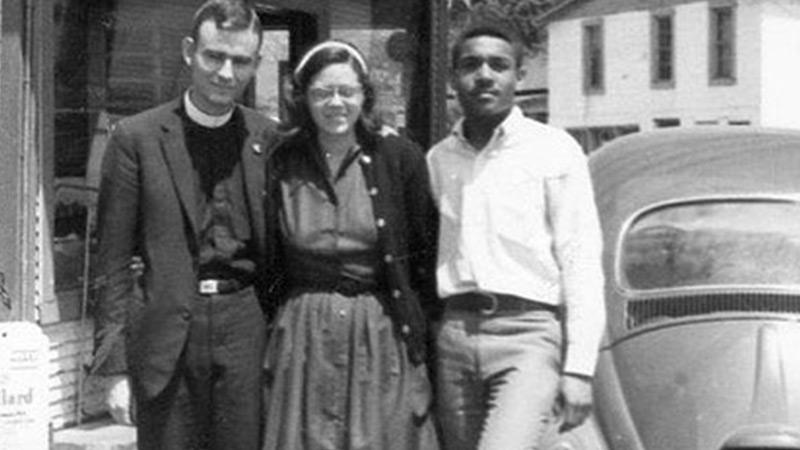“I think it was when I got tear-gassed leading a march in Camden that I began to change. I saw that the men who came at me were themselves not free …. I began to discover a new freedom in the cross—freedom to love the enemy and in that freedom to will and to try to set him free.”
Jonathan Daniels
Jonathan Daniels was an Episcopal seminary student who answered Martin Luther King’s call for clergy to join the Selma to Montgomery march for voting rights. After the march, Daniels felt he couldn’t stay away: “Something had happened to me in Selma, which meant I had to come back. I could not stand by in benevolent dispassion any longer.”
Daniels moved in with the Wests, a local family in Lowndes County Alabama. The area was known as “Bloody Lowndes,” for the violence of whites against blacks, and out of 6,000 eligible black voters, not one was registered to vote.
Daniels joined voter registration efforts and attempts to integrate churches. He called his work “living theology.”
In August 1965, Daniels was jailed with a group of protestors for a week. After their release, a few of them stopped by a store to buy some Cokes. A deputy sheriff met them at the door with a shotgun. Ruby Sales, a teenage activist, was in the lead. She recalled: “Next thing I knew, someone had pulled me from behind and I heard a shotgun blast. And I looked and I saw Jon falling.” He had made the ultimate sacrifice, the 26th activist killed in the movement.
Earlier that year, Daniels had written: “I lost fear in the black belt when I began to know in my bones and sinews that I have truly been baptized into the Lord’s death and resurrection, that in the only sense that really matters I am already dead, and my life is hid with Christ in God.”
Next: Prathia Hall


